#ict services provider
Explore tagged Tumblr posts
Link
সেরা ইন্টারনেট সেবা প্রদানকারী প্রতিষ্ঠানসমূহ
বাংলাদেশে ২০২৫ সালে ইন্টারনেট সেবা খাতে উল্লেখযোগ্য পরিবর্তন ও উন্নয়ন ঘটেছে। নতুন প্রযুক্তির আগমন, বিদ্যমান সেবাদাতাদের প্রতিযোগিতা এবং সরকারের নীতিমালার পরিবর্তনের ফলে গ্রাহকরা এখন আরও উন্নত ও বৈচিত্র্যময় ইন্টারনেট সেবা উপভোগ করতে পারছেন।
সেরা ইন্টারনেট সেবা প্রদানকারী প্রতিষ্ঠানসমূহ
১. Link3 Technologies
Link3 Technologies বাংলাদেশের অন্যতম শীর্ষস্থানীয় ইন্টারনেট সেবা প্রদানকারী প্রতিষ্ঠান। তাদের প্যাকেজগুলো ৫ এমবিপিএস থেকে শুরু করে ১০০ এমবিপিএস পর্যন্ত বিস্তৃত, যার মূল্য ৫০০ টাকা থেকে ৪৪০০ টাকা পর্যন্ত।
২. Amber IT
Amber IT উচ্চগতির ইন্টারনেট সেবা প্রদানে পরিচিত। তাদের প্যাকেজগুলো ৮ এমবিপিএস থেকে ১২০ এমবিপিএস পর্যন্ত, যার মূল্য ৫০০ টাকা থেকে ৪০০০ টাকা পর্যন্ত।
৩. Triangle Services Ltd.
Triangle Services Ltd. গেমিং, স্ট্রিমিং এবং রিমোট কাজের জন্য উপযুক্ত উচ্চগতির ফাইবার-অপটিক ইন্টারনেট সেবা প্রদান করে। তাদের প্যাকেজগুলো ৫ এমবিপিএস থেকে ৬০ এমবিপিএস পর্যন্ত, যার মূল্য ৫০০ টাকা থেকে ১৬৯৯ টাকা পর্যন্ত।
৪. DOT Internet
DOT Internet নিরবিচ্ছিন্ন সংযোগ এবং উচ্চগতির ইন্টারনেট সেবা প্রদান করে। তাদের প্যাকেজগুলো ১০ এমবিপিএস থেকে ১০০ এমবিপিএস পর্যন্ত, যার মূল্য ৫২৫ টাকা থেকে ৪২০০ টাকা পর্যন্ত।
0 notes
Text
Abrupt federal layoffs expected to hit tribal programs
The layoffs, targeted at probationary workers hired within the last year or two, are expected to impact programs at the Indian Health Service, Bureau of Indian Affairs, Bureau of Indian Education, and more, according to information provided to ICT.
News of the layoffs swept across Indian Country after two weeks of intense lobbying in Washington by Native people attending a string of conferences that addressed education, housing, health, public safety, justice, gaming, taxation, agriculture and environmental issues.
Oglala Sioux Tribe President Frank Star Comes Out wrote on Facebook after midnight Thursday that the layoffs will affect at least 2,600 federal employees in the Department of the Interior, 118 BIA employees, 40 BIE employees, two positions within the office of assistant secretary of Indian affairs, plus social workers, firefighters and police.
“We will make every effort to protect Indian Country according to Trust and Treaty obligations and keep everyone aware of changes as we find out,” he wrote on Facebook. “We are looking at injunctions and possible measures to take to counter. Please be patient as our federal partners are also learning of these changes happening, too.“
Although the numbers of impacted employees continued to shift, the layoffs are expected to include more than 850 employees in the IHS.
6 notes
·
View notes
Text











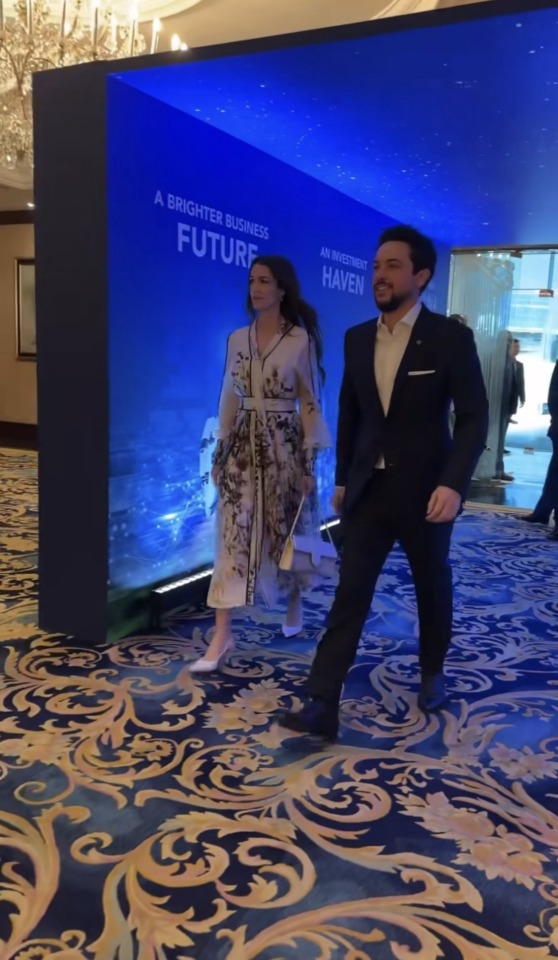




11 January 2024: Crown Prince Hussein, accompanied by Princess Rajwa, attended the launch of the Jordan-Singapore Tech Alliance Forum.
Speaking at the launch, Crown Prince Hussein highlighted the forum’s importance in unifying the two countries’ efforts towards technological excellence.
He stressed Jordan’s keenness to become a rising force on the international tech scene, highlighting the importance of digital transformation and entrepreneurship in nurturing creativity and turning ideas into reality.
The similarities between tech talents in Jordan and Singapore can be a bridge that connects the two countries and enhances cooperation in service of mutual interests, the Crown Prince said at the forum, held by the Ministry of Digital Economy and Entrepreneurship and Jordan’s embassy in Singapore, in cooperation with the Singapore Business Federation and SG Tech. (Source: Petra)
His Royal Highness invited business people, experts, and CEOs to visit Jordan to learn more about the ICT and entrepreneurship sector, which is full of promising Jordanian talents.
Minister of Digital Economy and Entrepreneurship Ahmad Hanandeh said that with more than 8,000 students graduating from IT-related programmes each year, Jordan’s digital economy continues to flourish, noting that Jordanians are making an impact that is attracting businesses from around the world.
He expressed the ministry’s keenness to continue helping Singaporean companies find the perfect home for their business in Jordan, highlighting the Jordan Source programme, which is helping businesses capitalise on Jordan’s exceptional potential as a global IT and business process outsourcing hub.
The Jordan-Singapore Tech Alliance Forum saw the participation of nearly 150 representatives of tech start-ups in Singapore, in addition to six Jordanian start-ups that provide technical support to international companies in sectors like gaming, digital education, and creative industries.
During the forum, key Jordanian tech companies gave briefings on their work, and participants engaged in discussions to attract international firms to Jordan by showcasing the competitiveness of the ICT sector in the Kingdom and success stories of Jordanian start-ups.
The forum also featured a presentation on the Jordan Source programme, launched in 2021 during a ceremony attended attendance of the Crown Prince, to promote Jordan as an international hub for innovation and investment in ICT and communications.
The forum is part of a series of Jordan Source promotional tours to attract investments and build partnerships with international companies seeking to expand into the Middle East through Jordan.
On the sidelines of the forum, a memorandum of understanding between Jordan’s Institute of Banking Studies and the Singapore FinTech Association was signed.
Planning Minister Zeina Toukan, Jordan’s Ambassador to Singapore Samer Naber, and Director of the Office of the Crown Prince Zaid Baqain attended the forum.
27 notes
·
View notes
Text
About time that forced marriage, illegal adoption and surrogacy is recognized for what it is, human trafficking
by Matthew Vella 24 January 2024
MEP negotiators and the Council have reached a provisional agreement to add forced marriage, illegal adoption and surrogacy as types of exploitation covered by the EU’s anti-trafficking law.
The update of the directive on preventing and combating trafficking in human beings will now require EU countries to make sure that people knowingly using services provided by victims of trafficking, can face sanctions.
In 2011, the EU adopted a directive on preventing and combating trafficking in human beings and protecting the victims of this crime, setting minimum rules concerning the definition of criminal offences and sanctions.
According to European Commission data, sexual and labour exploitation are the main purposes of trafficking in human beings. However, begging or organ removal – already explicitly mentioned in the 2011 directive – and forced marriage and illegal adoption – which are not explicitly mentioned – now represent 11% of all victims in the EU in 2020.
The provisional agreement will be submitted to member state representatives in the Council for confirmation, and be formally adopted by both the Council and the EP.
The agreement foresees that member states must make it a criminal offence if a person who uses the service provided by a trafficking victim knows that the person is a victim of trafficking. In such cases, member states need to ensure that this offence is punishable by effective, proportionate and dissuasive penalties.
Under the current law member states should only consider making the use of services of persons exploited by human traffickers a criminal offence.
Council and European Parliament negotiators agreed to explicitly mention in the directive that the exploitation of surrogacy, forced marriage and illegal adoption are types of exploitation which fall under the scope of the definition of trafficking. The trafficking for the exploitation of surrogacy, which is when a woman agrees to deliver a child on behalf of another person or couple to become the child’s parent(s) after birth, will target those who coerce or deceive women into acting as surrogate mothers.
Including these forms of trafficking in the EU anti-trafficking law will take into account the prevalence and the relevance of these forms of exploitation.
As is the case in the current directive, the new types of exploitation – forced marriage, illegal adoption and surrogacy – will be punishable by a maximum penalty of at least five years of imprisonment, or of at least ten years of imprisonment in case of aggravated offences.
A new aggravating circumstance in the law will take into account the amplifying effect that information and communication technologies (ICT) can have as regards trafficking. This includes the fact that the perpetrator facilitated or committed the dissemination, by means of ICT, of images, videos or similar material of a sexual nature involving the victim.
Sanctions on legal persons, such as companies, held accountable for trafficking offences will also be beefed up. They will from now on cover the exclusion from access to public funding, including tender procedures, grants, concessions and licences, and the withdrawal of permits and authorisations to pursue activities which have resulted in committing the offence.
“I’m happy with this agreement. It strengthens the protection of victims of trafficking, with a special focus on the most vulnerable victims including persons in need of international protection, women and girls and children,” Swedish MEP Malin Björk (Left) said.
“It requires the member states step up their response to trafficking in human beings including mandating national anti-trafficking coordinators. We have agreed to tackle exploitation of trafficking victims in its most obvious forms. Even though I would have liked to have a more extensive ban on exploitation including sexual exploitation, this is already an improvement on current legislation. It can never be okay to take advantage of trafficking victims.”
#European Union#Illegal adoption us human trafficking#Forced marriage is human trafficking#Surrogacy is human trafficking#Babies are not commodities
27 notes
·
View notes
Text
During President Biden's term, Secretary of the Interior Deb Haaland implemented a lot of actions that either exclusively or additionally benefitted Native Americans. After years and decades of neglect, those actions were necessary. However, at times I sensed that more energy, effort and emotion went toward those benefits than toward the rest of the US. That was wrong. Now, we get the pendulum swinging in the other direction, taking away or diminishing those benefits and those that existed before. So it has been and maybe always will be, which is also wrong.
Excerpt from this story from Truthout:
A coalition of tribal organizations issued a sharp response to the ongoing layoffs of thousands of federal employees across Indian Country, expressing “grave concerns” about the “catastrophic” impact to Indian health services, education, law enforcement, fire suppression and other programs delivering services to tribal nations, citizens and communities.
The letter, delivered Friday as the layoff notices were arriving in employee emails, urges the Office of Personnel Management alongside agency heads and the Department of Government Efficiency to provide exemptions for workers providing tribal services that are obligated under treaty and trust obligations.
The cutbacks could have “unintended life or death consequences” for tribal citizens who rely on the services, according to the letter, a copy of which was obtained by ICT.
“Thus far, we have only seen limited exemptions for Federal employees serving Indian Country which do not go far enough to protect essential workers, services, and funds Tribal Nations rely on,” according to the letter.
“When paired with the pauses on Federal funding that affected services Tribal Nations provide to their communities, the loss of Federal employees providing direct services to Tribal communities would be catastrophic,” the letter stated.
The letter was addressed to OPM Acting Director Charles Ezell and signed by 16 tribal organizations and the Navajo Nation.
The layoff notices were going out Friday to probationary federal workers who had been hired within the last year or two and were not yet covered under the civil service regulations that protect other federal workers.
The cuts are expected to cause deep cuts to the Indian Health Service, Bureau of Indian Affairs, Bureau of Indian Education, the Department of the Interior, the Department of Justice and any tribal offices within federal agencies.
“Tribes who receive direct service will be hit the hardest,” one official told ICT. Programs that fall under so-called 638 contracts or compacts will not be affected in this wave of layoffs, according to the official.
Layoffs were initially expected to include 2,200 IHS workers, of whom 1,400 provided direct patient care, including more than 90 physicians, 350 nurses, at least 25 nurse practitioners, nearly 20 dentists, 43 dental assistants, more than 85 pharmacists, 45 lab technicians, 25 hospital social workers, 45 lab technicians, nearly 130 medical assistants, as well as paramedics, dieticians, behavioral health workers, hospital food service workers, nursing assistants and more than 15 service area chief executives or their deputies.
But the White House issued an exemption Friday afternoon for certain IHS workers that reduced the total layoffs to more than 950, officials told ICT. Details were not immediately available on whether or how many doctors, nurses and other direct-care workers would be affected.
2 notes
·
View notes
Text
Caspian Legal Center - Law Firm in Azerbaijan
Caspian Legal Center is one of the best law firms in Azerbaijan, located in the heart of Baku, established by professional lawyers and tax consultants. Our experts have extended experience at local large companies, law firms and public bodies such as the Ministry of Taxes, Central Bank and the Ministry of Economy. For more information about our team, visit People. We provide a wide range of legal, tax, accounting and immigration services and related Azerbaijani law consultancy. Alongside its trusted professionalism, our services are practical and prompt for very reasonable fees compared with other ranked law firms in Baku. We are proud to inform that our Legal Practice and Tax Practice have been ranked and recognized by various international ranking agencies and institutions separately, including Legal 500, IFLR 1000, Chambers & Partners, International Tax Review “Tax Firm of the Year” Award in CIS, ITR World Transfer Pricing and ITR World Tax. For more, visit About. As one of the top law firms in Azerbaijan, we have extended experience in business formation and legal entity set-up, corporate and commercial deals, contracts and transactions, immigration, employment, litigation, as well as excellence tax consultancy and accounting services competing with other international firms in Azerbaijan. For more, visit Services. We are an internationally ranked law firm in Azerbaijan, providing mentioned consulting services in very diverse industries, including oil and gas (particularly related to PSA-Product Sharing Agreements and Host Government Agreements), energy and natural resources, oil-gas, renewable energy, finance and banking, ICT, construction, hospitality, industrial manufacturing and machinery, agriculture and F&B; industry, education, professional services and retail industry. CLC is among the very few law firms in Azerbaijan which supports large foreign businesses, including several GLOBAL FORTUNE 500 companies, and other large multinational enterprises from about 40 countries representing diverse industries and well-known local companies. Last but not least, being distinct from law firms in Azerbaijan, we provide one-stop-shop practical support with our tax and accounting team, as complementary to legal services. Accounting implementation of tax services brings added value to our practice-based tax advisory.
3 notes
·
View notes
Text
“How ICT helped you at home, in school and in communicating with people”
In numerous aspects of daily life, including communication with others and at home and school, ICT (information and communication technology) is essential. ICT can be useful in the following ways in each of these areas:
1. At home Information Access: Information about interesting subjects is easier to obtain thanks to ICT. People may study items, read news, find recipes, and pick up new skills online. Entertainment: A variety of entertainment alternatives, such as streaming music and movies and playing online games, are made possible by ICT. Organization: ICT technologies that aid in time management and task, bill, and reminder organization include calendars, to-do list applications, and virtual assistants. Online Shopping: Time is saved and convenience is added when shopping and using services like groceries thanks to ICT.
ICT (Information and Communication Technology) plays a vital role in various aspects of daily life, from home and school to communication with others. Here’s how ICT can help in each of these areas: 2. In School Enhanced Learning: ICT tools like educational websites, digital textbooks, and interactive software enhance understanding. Platforms like Google Classroom, Zoom, and other learning management systems make it easy for teachers to share resources and engage students in virtual settings. Research: ICT provides access to a vast amount of online academic materials and resources, making it easier for students to complete assignments and projects. Collaboration: ICT fosters collaboration among students, enabling them to work together on projects using shared documents and online tools. Skill Development: Familiarity with ICT tools prepares students for technology-driven workplaces, giving them a competitive edge in their future careers.
3. In Communication Instant Connectivity: ICT tools like email, messaging apps, and video calls help people stay connected with family and friends, regardless of distance. Social Networking: Social media platforms allow people to build networks, share life events, and maintain connections with friends, family, and professional contacts. Work Communication: ICT enables remote working and collaboration through tools like Slack, Microsoft Teams, and Zoom, which is especially valuable for productivity and efficiency. Language Translation: ICT tools like Google Translate help people communicate across language barriers, making global communication more accessible.
2 notes
·
View notes
Text
5 key Trends in INFORMATION and COMMUNICATION TECHNOLOGY (ICT)
In today's ever-changing technological landscape, staying current on the latest trends is critical for both individuals and businesses. These patterns influence how we communicate, connect, and complete tasks in both our personal and professional lives. The following are five key trends in ICT that are making waves now, along with examples to demonstrate their significance.

1. CONVERGENCE
Convergence in ICT refers to the combination of various technologies to generate forms of communication and information. This trend focuses on establishing a seamless user experience by combining multiple functionalities into a single device or platform. Convergence has been a driving force in the creation of smartphones, which combine a phone, camera, music player, and internet browser in one device.
Examples:
- Smartphones: Combine various functions like calling, browsing, and photography.

- Smart TVs: Integrate television with internet browsing and streaming services.

2. SOCIAL MEDIA
Social media has become an essential part of our daily lives, changing the way we communicate and share information. Platforms such as Facebook, Twitter, and Instagram enable users to interact, create, discuss, modify, and share user-generated content. These platforms allow users to interact with a global audience, making social media an effective tool for personal and professional communication.
Examples:
- Facebook: Connects people globally and allows for sharing of updates, photos, and events.
- Twitter: Known for its microblogging feature, where users post short, concise updates.

3. MOBILE TECHNOLOGIES
The proliferation of smartphones and tablets has changed the way we access information and complete jobs. These gadgets have evolved into mini-computers capable of running a variety of apps that were previously limited to desktops. Mobile technology has permitted internet access at any time and from any location, making it important in today's fast-paced society.
Examples:
- iOS: Used in Apple devices such as iPhones and iPads.
- Android: An open-source operating system developed by Google, used by many mobile manufacturers.
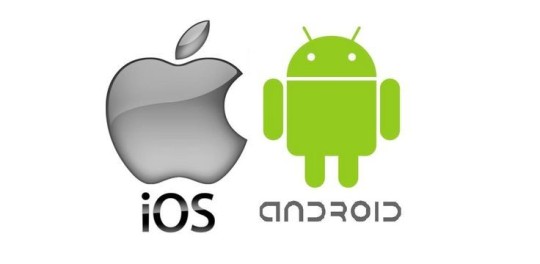
4. ASSISTIVE MEDIA
Assistive media refers to technologies and services that help people with visual and reading impairments. These technologies make sure that everyone, regardless of physical restrictions, has access to and benefits from digital material. Assistive media is more than just accessibility; it is also about inclusivity.
Examples:
- Screen readers: Convert text to speech, allowing visually impaired users to interact with digital content.
- Braille displays: Provide tactile output of text for users who are blind.

5. CLOUD COMPUTING
Cloud computing has transformed how we store, access, and manage data. Users can utilize remote servers hosted on the internet to store data and access apps from anywhere in the globe. This tendency has resulted in enhanced productivity, scalability, and collaboration, particularly in the corporate sphere.
Examples:
- Google Drive: Allows users to store files online and access them from any device.
- Dropbox: A cloud storage service that enables easy file sharing and backup.

These developments demonstrate ICT's dynamic nature and tremendous impact on our lives. These trends, whether they improve connectivity, enable accessibility, or revolutionize data management, are altering the future of technology in previously imagined ways. Staying educated and flexible to these trends will be critical to success in the digital age.
Passed by: JEVE ASHLEY C. SUAGA
2 notes
·
View notes
Text
5 Key Trends in Information and Communication Technology (ICT)
The landscape of Information and Communication Technology (ICT) is constantly evolving, driven by innovations that transform how we communicate, work, and live. Here are five key trends currently shaping the ICT sector, complete with examples and photos to illustrate their impact.
1. Convergence
Convergence in ICT refers to the merging of previously distinct technologies and services into a unified system. This trend is breaking down barriers between various media, telecommunications, and IT services, leading to more integrated and streamlined solutions.
Example: Smart Home Devices - Devices like Amazon Echo and Google Nest integrate voice control, home automation, and entertainment in one system.
Before:

After:

2. Social Media
Social media continues to revolutionize how people connect, share information, and engage with content. Its influence extends beyond personal interactions to business, marketing, and customer service.
Example: Instagram for Business - Companies use Instagram to promote products, engage with customers, and build their brand presence.
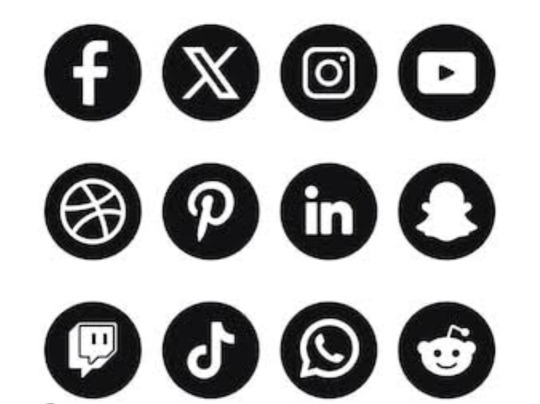
3. Mobile Technology
Mobile technology is at the heart of modern ICT, with smartphones and tablets becoming essential tools for communication, entertainment, and work.
Example: Mobile Banking Apps - Apps like Venmo and Revolut enable users to manage finances, transfer money, and make payments from their smartphones.
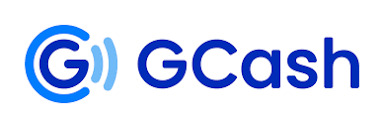
4. Assistive Media
Assistive media technologies are designed to help individuals with disabilities access information and communicate effectively, promoting inclusivity and accessibility.
Example: Voice Assistants - Devices like Amazon Alexa and Google Assistant provide voice-activated support for visually impaired users.

5. Cloud Computing
Cloud computing continues to transform how businesses and individuals store, manage, and process data, offering scalable and flexible solutions.
Example: Google Workspace - A suite of cloud-based productivity tools that includes Google Docs, Sheets, and Drive, facilitating collaboration and remote work.
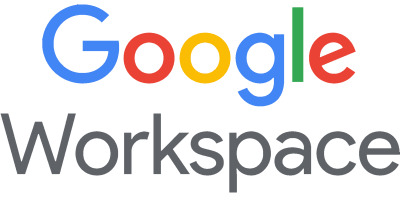
PASSED BY:JAMES JIAN B. ESLABON
2 notes
·
View notes
Text
"THE 5 TRENDS IN ICT (EMPOWERMENT TECHNOLOGY)"
PREPARED AND SUBMITTED BY:
AMIRA DALIPE ( HUMSS 11-3)
"_In the ever-evolving landscape of Information and Communication Technology (ICT), innovation is the driving force behind transformative trends that shape the way we interact with technology and the world around us. From the seamless integration of converging technologies to the dynamic realm of social media, mobile technology, assistive media, and cloud computing, the ICT industry is a vibrant tapestry of innovation and connectivity.
CONVERGENCE, the harmonious fusion of telecommunications, computing, and broadcasting technologies, paves the way for interconnected systems and enhanced user experiences. SOCIAL MEDIA platforms have redefined communication and community engagement, offering a global stage for connection and collaboration. MOBILE TECHNOLOGY, has become an indispensable tool for productivity and connectivity, empowering users to access information and services anytime, anywhere.
ASSISTIVE MEDIA technologies play a vital role in promoting inclusivity and accessibility, ensuring that individuals with disabilities can navigate and interact with digital content effectively. CLOUD COMPUTING, revolutionizes data storage and access, providing scalable and flexible solutions for businesses and individuals alike.
JOIN US on a journey through the impactful trends of convergence, social media, mobile technology, assistive media, and cloud computing as we explore their significance in shaping the digital landscape and driving innovation in the ICT sector. Embrace the possibilities and potential of these trends as we navigate the dynamic world of technology and connectivity."
The 5 trends of ICT, represent a fundamental shift in how we interact with technology and information. For further understanding, here are the TRENDS OF ICT that are present in this modern world:
1.) CONVERGENCE - technological convergence is the synergy of technological advancement to work on a similar goal or task. The convergence trend in the Information and Communication Technology (ICT) involves merging various technologies like telecommunications, computing, and broadcasting to create innovative solutions. This convergence enhances user experiences and promotes a more efficient digital environment.
Moreover, the merging of technologies allows for the development of versatile devices with a range of functions, from communication to productivity. This trend has transformed how we engage with technology, blurring traditional boundaries and opening up new possibilities for interconnected services.
Embracing convergence enables businesses and individuals to harness the benefits of different technologies, improving productivity and creating personalized experiences for users. This trend highlights the dynamic nature of ICT, where integrating diverse technologies leads to increased innovation, connectivity, and efficiency in the digital realm.
2.) SOCIAL MEDIA- It is a website application, or online channels that enable web users to create, co-create, discuss, modify and exchange user generated content. Social media, within the realm of the 5 trends of ICT, has emerged as a potent influence that has transformed our modes of communication, information sharing, and global interaction. It transcends mere personal connections to redefine how we access news, engage with brands, and participate in societal and political dialogues.
The landscape of social media is dynamic, continually integrating with and evolving alongside other technologies. The advent of social commerce allows users to make direct purchases through social platforms, while the emergence of social audio platforms like Clubhouse is reshaping the way we consume and engage with content.
-For additional information about Social Media, I will provide the 5 types itself:
1.)SOCIAL NETWORKING- social networks allows you to connect with other people of the same interest or background. The purpose to share information, interests, and experiences, creating and nurturing relationships through digital platforms. It enables individuals to interact, communicate, and engage with a broader network of people, transcending geographical boundaries and playing a crucial role in modern communication.
2.) BOOKMARKING SITES- These are sites that allows you to store and manage links to various websites and resources, Rather, these are online platforms that enable users to save and organize links to web pages or online resources for future reference. These sites provide a convenient way for users to store and categorize their favorite websites, articles, or content, making it easier to revisit them later. Bookmarking sites often include features such as tagging, categorization, and sharing options, allowing users to manage their bookmarks efficiently and discover new content based on the recommendations of other users. These platforms facilitate organization, easy access to saved links, and the sharing of curated content with a wider audience.
3.) SOCIAL NEWS- These are sites that allows users to post their own news items or links to other news sources. Users can share, discover, and engage with news articles and current events. These platforms enable users to submit news stories, vote on the content, and participate in discussions surrounding the latest headlines. Social news sites rely on user participation to curate and prioritize news stories, with the most popular or relevant articles rising to the top based on user votes. Users can interact with the content by commenting, sharing, and engaging in conversations with other members of the community. Social news platforms like Reddit, Digg, and Flipboard provide a space for users to stay informed, share perspectives, and contribute to the collective curation of news content.
4.) MEDIA SHARING- these are sites that allows you to upload and share media content like images music and video. Users have the ability to upload their media content to these platforms, allowing a broader audience to access and engage with it by viewing, listening, or downloading the files. Media sharing platforms empower users to demonstrate their creativity, exchange life moments, and explore content created by other users. Well-known media sharing platforms include Instagram for sharing photos and videos, YouTube for video content, SoundCloud for sharing audio files, and Dropbox for sharing documents. These platforms serve as essential tools for users to express themselves, connect with like-minded individuals, and explore a wide array of media content.
5.) MICROBLOGGING- These are size that focus on short updates from the user. These posts, known as microposts, are typically limited in length, often to a specific character count, and are designed to be quickly and easily consumed by the audience. Microblogging platforms enable users to share real-time updates, engage in conversations, express opinions, and interact with others in a succinct and immediate manner.
6.) BLOGS AND FORUMS- These subsides allow users to post their content, engage in discussions, and connect with others based on shared interests. Both blogs and forums are examples of how technology has transformed communication and information sharing. They demonstrate the convergence of social media and communication platforms, the rise of mobile technologies, and the increasing use of cloud computing. They also showcase the potential for online communities to connect, share knowledge, and engage in discussions on various topics.
NEXT,
3.) MOBILE TECHNOLOGY- Mobile technology is a broad term encompassing any portable device that allows users to access and share information, communicate, and perform various tasks wirelessly. It's a rapidly evolving field that has revolutionized how we live, work, and interact with the world. The popularity of smartphones and tablets has taken a major rise over the years this is larger because of the device capability to do task that were original sound in personal computers. Mobile technology allows users to access the internet, send and receive messages, make calls, and engage with a wide range of applications from anywhere with a wireless connection.
4.) ASSISTIVE MEDIA- It is a non-profit service designed to help people who have visual and reading impairment a database of audio recording is used to read to the user. It is also known as assistive technology (refers to devices, software, tools, and equipment designed to assist individuals with disabilities in various aspects of their lives.) These technologies aim to enhance accessibility, independence, and quality of life for people with disabilities by providing support in communication, mobility, education, and daily activities.
AND LASTLY,
5.)CLOUD COMPUTING- It is the distribution of computation on the internet or delivery of computing service over the internet, rather. It is a transformative technology that has revolutionized how we access and utilize computing resources. It involves delivering computing services, such as servers, storage, databases, networking, software, and analytics, on-demand over the internet. Instead of owning and maintaining physical infrastructure, users access these resources remotely through a pay-as-you-go model, making it a cost-effective and flexible solution for individuals and businesses alike.
In conclusion, In the dynamic world of Information and Communication Technology (ICT), innovation drives transformative trends that shape how we interact with technology. Convergence merges telecommunications, computing, and broadcasting for enhanced user experiences. Social media redefines communication and collaboration globally. Mobile technology empowers connectivity and productivity. Assistive media promotes inclusivity for individuals with disabilities. Cloud computing revolutionizes data storage and access. Together, these trends create a vibrant tapestry of innovation and connectivity in the ICT sector, offering endless possibilities for a more connected and inclusive digital future, there are so much more to explore and to learn, so deep dive and lets continue in knowing our modern world of ICT!
THANK YOU SO MUCH!
2 notes
·
View notes
Text
Deepfake misuse & deepfake detection (before it’s too late) - CyberTalk
New Post has been published on https://thedigitalinsider.com/deepfake-misuse-deepfake-detection-before-its-too-late-cybertalk/
Deepfake misuse & deepfake detection (before it’s too late) - CyberTalk


Micki Boland is a global cyber security warrior and evangelist with Check Point’s Office of the CTO. Micki has over 20 years in ICT, cyber security, emerging technology, and innovation. Micki’s focus is helping customers, system integrators, and service providers reduce risk through the adoption of emerging cyber security technologies. Micki is an ISC2 CISSP and holds a Master of Science in Technology Commercialization from the University of Texas at Austin, and an MBA with a global security concentration from East Carolina University.
In this dynamic and insightful interview, Check Point expert Micki Boland discusses how deepfakes are evolving, why that matters for organizations, and how organizations can take action to protect themselves. Discover on-point analyses that could reshape your decisions, improving cyber security and business outcomes. Don’t miss this.
Can you explain how deepfake technology works?
Deepfakes involve simulated video, audio, and images to be delivered as content via online news, mobile applications, and through social media platforms. Deepfake videos are created with Generative Adversarial Networks (GAN), a type of Artificial Neural Network that uses Deep Learning to create synthetic content.
GANs sound cool, but technical. Could you break down how they operate?
GAN are a class of machine learning systems that have two neural network models; a generator and discriminator which game each other. Training data in the form of video, still images, and audio is fed to the generator, which then seeks to recreate it. The discriminator then tries to discern the training data from the recreated data produced by the generator.
The two artificial intelligence engines repeatedly game each other, getting iteratively better. The result is convincing, high quality synthetic video, images, or audio. A good example of GAN at work is NVIDIA GAN. Navigate to the website https://thispersondoesnotexist.com/ and you will see a composite image of a human face that was created by the NVIDIA GAN using faces on the internet. Refreshing the internet browser yields a new synthetic image of a human that does not exist.
What are some notable examples of deepfake tech’s misuse?
Most people are not even aware of deepfake technologies, although these have now been infamously utilized to conduct major financial fraud. Politicians have also used the technology against their political adversaries. Early in the war between Russia and Ukraine, Russia created and disseminated a deepfake video of Ukrainian President Volodymyr Zelenskyy advising Ukrainian soldiers to “lay down their arms” and surrender to Russia.
How was the crisis involving the Zelenskyy deepfake video managed?
The deepfake quality was poor and it was immediately identified as a deepfake video attributable to Russia. However, the technology is becoming so convincing and so real that soon it will be impossible for the regular human being to discern GenAI at work. And detection technologies, while have a tremendous amount of funding and support by big technology corporations, are lagging way behind.
What are some lesser-known uses of deepfake technology and what risks do they pose to organizations, if any?
Hollywood is using deepfake technologies in motion picture creation to recreate actor personas. One such example is Bruce Willis, who sold his persona to be used in movies without his acting due to his debilitating health issues. Voicefake technology (another type of deepfake) enabled an autistic college valedictorian to address her class at her graduation.
Yet, deepfakes pose a significant threat. Deepfakes are used to lure people to “click bait” for launching malware (bots, ransomware, malware), and to conduct financial fraud through CEO and CFO impersonation. More recently, deepfakes have been used by nation-state adversaries to infiltrate organizations via impersonation or fake jobs interviews over Zoom.
How are law enforcement agencies addressing the challenges posed by deepfake technology?
Europol has really been a leader in identifying GenAI and deepfake as a major issue. Europol supports the global law enforcement community in the Europol Innovation Lab, which aims to develop innovative solutions for EU Member States’ operational work. Already in Europe, there are laws against deepfake usage for non-consensual pornography and cyber criminal gangs’ use of deepfakes in financial fraud.
What should organizations consider when adopting Generative AI technologies, as these technologies have such incredible power and potential?
Every organization is seeking to adopt GenAI to help improve customer satisfaction, deliver new and innovative services, reduce administrative overhead and costs, scale rapidly, do more with less and do it more efficiently. In consideration of adopting GenAI, organizations should first understand the risks, rewards, and tradeoffs associated with adopting this technology. Additionally, organizations must be concerned with privacy and data protection, as well as potential copyright challenges.
What role do frameworks and guidelines, such as those from NIST and OWASP, play in the responsible adoption of AI technologies?
On January 26th, 2023, NIST released its forty-two page Artificial Intelligence Risk Management Framework (AI RMF 1.0) and AI Risk Management Playbook (NIST 2023). For any organization, this is a good place to start.
The primary goal of the NIST AI Risk Management Framework is to help organizations create AI-focused risk management programs, leading to the responsible development and adoption of AI platforms and systems.
The NIST AI Risk Management Framework will help any organization align organizational goals for and use cases for AI. Most importantly, this risk management framework is human centered. It includes social responsibility information, sustainability information and helps organizations closely focus on the potential or unintended consequences and impact of AI use.
Another immense help for organizations that wish to further understand risk associated with GenAI Large Language Model adoption is the OWASP Top 10 LLM Risks list. OWASP released version 1.1 on October 16th, 2023. Through this list, organizations can better understand risks such as inject and data poisoning. These risks are especially critical to know about when bringing an LLM in house.
As organizations adopt GenAI, they need a solid framework through which to assess, monitor, and identify GenAI-centric attacks. MITRE has recently introduced ATLAS, a robust framework developed specifically for artificial intelligence and aligned to the MITRE ATT&CK framework.
For more of Check Point expert Micki Boland’s insights into deepfakes, please see CyberTalk.org’s past coverage. Lastly, to receive cyber security thought leadership articles, groundbreaking research and emerging threat analyses each week, subscribe to the CyberTalk.org newsletter.
#2023#adversaries#ai#AI platforms#amp#analyses#applications#Articles#artificial#Artificial Intelligence#audio#bots#browser#Business#CEO#CFO#Check Point#CISSP#college#Community#content#copyright#CTO#cyber#cyber attacks#cyber security#data#data poisoning#data protection#Deep Learning
2 notes
·
View notes
Text

Bundle 2024 Christmas Best Review: Top 13 Best-Selling Products in the Xmas Mega Deal World’s First 13-in-1 AI Suite for Lifetime Access with Zero Monthly Fees
Introduction: Bundle 2024 Christmas Best Review
As the Christmas season approaches, the technological or ICT savvy gift seekers and digital entrepreneurs are set for the biggest online promotion, Xmas 2024 Super Bundle. Yet, for a lifetime, you can gain access to this nascent 13-in-1 AI suite of the future at just 1% of the cost!
In this long and detailed overview, we’ll discuss why this bundle is the best gift you could offer to anyone who dreams of leveraging AI-driven solutions for self- or professional-improvement.
Overview: Bundle 2024 Christmas Best Review
Vendor: Venkatesh et al
Product: Christmas Bundle 2024
Front-End Price: $17
Official Page: Check
Discount: Yes, $3 Coupon Code= “HOLIDAYBUNDLE”
Bonuses: Yes
Niche: ChatGPT, Best Selling Apps, Christmas Bundle
Support: Effective Response
Recommend: Highly recommend!
Guarantee: 30 Days Money Back Guarantee
What is the Xmas 2024 Super Bundle?
The Xmas 2024 Super Bundle is the ultimate selection of 13 of the most popular AI tools that addresses different business segments: email marketing tools, content generation, outsourcing platforms, and music producers.
Over the time, this bundle provides the user with this product at a one-time affordable cost as compared to subscribing to the services every month. Cut out for both novices and experts, the bundle is transformative to the AI world.
#ChristmasBundle#XmasMegaDeal#review#AI#HolidayShopping#GiftIdeas#BestSellers#TopProducts#AItechnology#LifetimeAccess#ZeroMonthlyFees#HolidayDeals#ChristmasGifts#HolidayBundles#TechSavvy#SmartShopping#MustHaves#LimitedTimeOffer#HolidaySpecials#UltimateBundle#SmartInvestment#HolidaySeason#ChristmasShopping#HolidayGiftGuide#TechLovers#SmartSavings
1 note
·
View note
Text
Hello mga ka sheesh, my co- pre-service teachers and Pauliniatics. This is your newbie blogger Stephan Hashley Javier, 19 years old and not ready to be an adult huhu! I am currently taking a Bachelor of Secondary Education major in Science, and I believe that cram is the best way to finish your activities!
Come along with me and my journey in TTL promising you that this blog is full of sheshableness! :>
THESE ARE MY ANSWER IN OUR FIRST QUIZ IN TTL 1 UNDER MR. MARK FRANCIS ASTOM.
In this blog I will be tackling the different facets in Ict, and will be able to give real life scenarios in each of them. Sit back and read.
Before you start, here is some ice cream, to be more relaxed while reading. <3

____________________
Cloud Computing
Scenario:
It allows me and my fellow students to access updated learning tools from anywhere, making collaboration easier and saving time. Where we can view some digital notes and modules for us to be easy to access. The remote capacity of cloud platforms means that a more diverse range of students can also be reached by educational institutions while lowering costs.
Software
Scenario:
I use software to help me learn more efficiently. This can include games and simulators, flashcard apps, video conferencing, and some online learning apps for , online encyclopedias, or tools like calculators or spellcheckers. For me to make my learning easy. For the past 3 years we have been using some software in our daily life as students, like Microsoft 365 where it is really necessary in the learning process.
Transaction
Scenario:
We are in a transaction everyday we cannot just notice it sometimes, as a lazy person like me I like purchasing online that going to a mall to buy my necessities one of online platforms that I've been using is Tiktok shop, Shoppe, Lazada, Food Panda, and in paying them I am using gcash, gcash is very easy to use and safe also you don't need your wallet too.
Hardware
Scenario:
As an education student the first thing that we need is Gadgets like phones, laptop, printer, wifi, and etc. So it is easy for us to access some online learning access.
Digital Data
Scenario:
As a student I rely more on digital data to have more accuracy, because judgments and actions are made by computers rather than people, so it is greater accuracy in terms of assigned duties. Also it is faster and wider reached because the digital data can contact and provide data to many individuals simultaneously and at the one push of a button, it is really incredibly and considerably faster to use and to access with.
Internet Browsers
Scenario:
Web Browsers allow me to access websites, search for information, shop online, and connect with my friends worldwide. They can translate complex web code into user-friendly pages, making the internet accessible to everyone and easy to use too and it is also relevant to our journey as students and future educators.
Computers and Technology
Scenario:
Last semester in one of our subjects, the teacher required us to create our own research. We need to gather information on renewable energy sources. Computers and technology help us and guide me on how to use computers and technology effectively for our very own research. Computers and technology have really been a powerful tools for research. First, we begin by identifying reliable online sources. We also used search engines to find reputable websites, academic journals, and research papers related to renewable energy sources. We also made sure to evaluate the sources for credibility and relevance. From this scenario, we, student reallt needs to seeks guidance on using computers and technology in making research. Where even the teacher provides information on finding reliable online sources, the computers and technology still hits diff.
Online Access
Scenario;
I noticed this during the pandemic in 2020 where the pandemic started, the Philippines Local Government implemented the Digital Online Class where the students started to rely on Online sources. Then nowadays we noticed that the majority of the population relies heavily on the internet for various aspects of their lives. Country is known for its strong community spirit and commitment to progress. Where online access has become an integral part of everyday life, enabling the people to stay connected, access information, and even on conducting and relying on their businesses.
In the Philippines the local government has implemented a digital infrastructure plan to ensure that every school has access to high-speed internet. This initiative has transformed the country into a hub of digital innovation, attracting new businesses and entrepreneurs who appreciate the convenience and opportunities provided by online connectivity such as online sellings and etc.
The citizens in the Philippines and also all over the world have embraced the benefits of online access in their daily lives. Students can easily access educational resources and participate in online learning programs. Small business owners can reach a wider customer base through e-commercial platforms. Professionals and un-professionals can also work remotely, saving time and reducing commuting expenses. Even healthcare services have become more accessible through telemedicine, allowing people to consult doctors online without leaving their homes that's another benefit of online access.
The community has also leveraged online platforms to enhance social interactions and support local initiatives. Online forums and social media groups have become platforms for sharing ideas, organizing events, and fostering a sense of belonging. The students have been actively participating in virtual seminars because it is easy for them to access, they don't need to travel at all and it's less hassle, where they can freely voice their opinions and contribute to decision-making processes.
Online access has also played a crucial role ti us as we response to emergencies and natural disasters. The local government uses digital communication channels to provide real-time updates and instructions to residents, ensuring their safety and well-being. Also Online fundraising campaigns have been successful in mobilizing support during times of crisis, allowing the community to come together and help those in need.
Online access has become a lifeline for the people, empowering them to thrive in a digital age. The country serves as an example of how a strong digital infrastructure can enhance the quality of life, foster economic growth, and strengthen community bonds.
____________________________________________
Here I am emphasizing Learning process because all that I've mentioned was all interconnected w/ each other. Online access in the learning process, where the teachers can a make use of the internet by proving the students with extra study material and resources such as interactive lessons, educational quizzes as well as tutorials. Teachers can also record their lectures and provide it to the students for revisions which is better than reading from notes. We cannot deny the fact that every student always uses their gadgets so it is easy for them to access their notes when it is digital.
Online access can be applied in various ways in teaching learning in Virtual Classes Online access can be applied in teaching and learning in various ways to enhance the educational experience. Here are some examples is the Virtual Classes where Online access allows teachers and students to connect through video conferencing platforms, enabling live virtual classes, Online Learnings where we can utilize online learning platforms which the teachers can create and share educational resources such as lecture notes, videos, quizzes, and assignments, Collaborative Projects where nline access enables students to collaborate on projects and assignments, even when they are not physically present in the same location where they can also create group chats so they can communicate with each others, Multimedia Content with this the implementer can incorporate multimedia content into their lessons to make them more engaging and interactive, and also in Online Assessments where Online access allows for the administration of online assessments, including quizzes, tests, and exams or diagnostic exam trough google drives, and etc.
2 notes
·
View notes
Text
SESSION 1. INTRODUCTION TO INFOCOMM TECH LAW IN SINGAPORE
OPTIONAL READING: ICT LAW IN SINGAPORE CHAPTER 1
OPTIONAL REFERENCES: LAW AND TECH IN SINGAPORE CHAPTERS 1-3
A. COURSE DESCRIPTION AND OBJECTIVE
New economies have emerged within the last two decades including digital models of transaction and disruptive innovation. Internet intermediaries generally are taking on a major role as facilitators of commercial and non-commercial transactions online. These include social networking platforms (e.g. Facebook, IG and Twitter), multimedia sharing platforms (e.g. YouTube, Apple Music and Spotify), search engines and news aggregators (e.g. Yahoo, Google), content hosts and storage facilities (e.g. Dropbox) and many others. Content generating platforms such as TikTok have also become popular even as cybersecurity concerns and other misgivings have emerged at the governmental level in some jurisdictions.
In the last few years, the use of Internet of Things (IoT) have become quite common in advanced economies, the latest being wearable devices for the 'Metaverse' and an even more immersive experience in the digital realm. Artificial Intelligence (AI) is also becoming more visible at the workplace and at home, leading to ethical concerns and a slate of guidelines globally to 'govern' its development and deployment. Most recently, interest in generative AI (GAI) emerged from the successful launch of chatGPT and other similar services.
Policies and laws have been adapted to deal with the roles and functions of Internet intermediaries, IoT and AI devices and services, and their potential effects and impact on society. Regulators in every jurisdiction are faced with the challenge to manage the new economy and players, and to balance the interest of multiple parties, in the context of areas of law including intellectual property, data protection, privacy, cloud technology and cyber-security. Different types of safe harbour laws and exceptions have emerged to protect these intermediaries and putting in place special obligations; while some forms of protections have been augmented to protect the interests of other parties including content providers and creators as well as society at large. Students taking this course will examine the legal issues and solutions arising from transactions through the creation and use of digital information, goods and services ('info') as well as the use of non-physical channels of communication and delivery ('comm').
The technological developments from Web 1.0 to 2.0 and the future of Web 3.0 with its impact on human interaction and B2B/B2C commerce as well as e-governance will be examined in the context of civil and criminal law, both in relation to the relevance of old laws and the enactment of new ones. In particular, this course examines the laws specifically arising from and relating to electronic transactions and interaction and their objectives and impact on the individual vis-à-vis other parties. Students will be taken through the policy considerations and general Singapore legislations and judicial decisions on the subject with comparisons and reference to foreign legislation where relevant.
In particular, electronic commerce and other forms of transactions will be studied with reference to the Electronic Transactions Act (2010) and the Singapore domain name framework supporting access to websites; personal data privacy and protection will be studied with reference to the Personal Data Protection Act of 2012 and the Spam Control Act; the challenges and changes to tort law to deal with online tortious conduct will be analysed (e.g. cyber-harassment under the Protection from Harassment Act (2014) and online defamation in the context of online communication); the rights and liabilities relating to personal uses of Internet content and user-generated content will be considered with reference to the Copyright Act (2021); computer security and crimes will be studied with reference to the Computer Misuse Act (2017) and the Cybersecurity Act (2018); and last, but not least, Internet regulation under the Broadcasting Act and its regulations as well as the Protection from Online Falsehoods and Manipulation Act (2019), the Foreign Interference (Countermeasures) Act (2021) and the Online Criminal Harms Bill (2021) will be critically evaluated.
You will note from the above paragraph that there have been an acceleration in the enactment of ICT laws and amendments in recent years, which shows the renewed focus of the government and policy-makers when it comes to the digital economy and society (as we move towards a SMART Nation). This is happening not online in Singapore, but abroad as well. In such an inter-connected work with porous jurisdiction when it comes to human interaction and commercial transactions, we have to be aware of global trends and, in some cases, the laws of other jurisdictions as well. When it is relevant, foreign laws will also be canvassed as a comparison or to contrast the approach to a specific problem. Projects are a good way to approach in greater depth.
B. CLASS PREPARATION FOR SESSION 1
In preparation for this session, use the online and library resources that you are familiar with to answer the following questions in the Singapore context (and for foreign/exchange students, in the context of your respective countries):
What are the relevant agencies and their policies on ICT?
What are the areas of law that are most impacted by ICT?
What is the government's position on Artificial Intelligence?
What are the latest legal developments on this field?
Also, critically consider the analysis and recommendations made in the report on Applying Ethical Principles for Artificial Intelligence in Regulatory Reform, SAL Law Reform Committee, July 2020. Evaluate it against the second version of the Model AI Governance Framework from the IMDA. Also, look at the Discussion Paper on GAI released on 6 June 2023. Take note of this even as we embark on the ‘tour’ of disparate ICT topics from Session 2 onwards, and the implications for each of those areas of law that will be covered in class.
C. ASSESSMENT METHOD AND GRADING DISTRIBUTION
Class Participation 10% (individually assessed)
Group Project 30% (group assessed)
Written Exam 60% (2 hour open book examination)
This course will be fully conducted in the classroom setting. Project groups will be formed by week 2, projects will be assigned from week 3, and presentations will begin from week 4 with written assignments to be due for submission a weeks after presentation. Further details and instructions will be given after the groups are formed, but before the first project assignment.
D. RECOMMENDED TEXTBOOK AND READINGS
The main textbook is: Warren B. Chik & Saw Cheng Lim, Information and Communications Technology Law in Singapore (Academy Publishing, Law Practice Series, July 2020). You can purchase the book (both physical and electronic copies) from the Singapore Academy of Law Publishing (ask for the student discount). If you prefer, there are copies available in the reserves section of the Law Library that you can use. The other useful reference will be: Chesterman, Goh & Phang, Law and Technology in Singapore (Academy Publishing, Law Practice Series, September 2021).
Due to the rapid pace of development in the law in some areas of analysis, students will also be given instructions and pre-assigned readings via this blog one week before each lesson. Students need only refer to the SMU eLearn website for administrative information such as the Project Schedule and the Grade Book as well as to share project papers and presentation materials. Students will be expected to analyse legislative provisions and/or cases that are indicated as required reading for each week.
Free access to the local legislation and subsidiary legislation may be found at the Singapore Statutes Online website at: https://sso.agc.gov.sg.
Local cases are accessible through the Legal Workbench in Lawnet. The hyperlink can be found under the Law Databases column on the SMU Library’s Law Research Navigator at: http://researchguides.smu.edu.sg/LAW.
Other online secondary legal materials on Singapore law that you may find useful include Singapore Law Watch (http://www.singaporelawwatch.sg) and Singapore Law SG (https://www.singaporelawblog.sg).
There are also other secondary resources made available from the SMU Library when doing research for your projects such as the many other digital databases available from the LRN (e.g. Lexis, Westlaw and Hein online that are all available under the Law Databases column) and the books and periodicals that are available on the library shelves.
5 notes
·
View notes
Text
SESSION 2. INTERNET CONTENT REGULATION
READ: ICTL TEXTBOOK CHAPTER 2
OPTIONAL REFERENCE ONLY: L&T BOOK CHAPTER 4
A. INTERNET CONTENT REGULATIONS
Freedom of Speech and Expression: Singapore citizens enjoy certain fundamental liberties under the Constitution, but with certain limitations. In particular, freedom of speech appears in Article 14 of the Constitution. What is the relationship between democratic rights to free speech, expression and assembly on the one hand and the Singapore’s content regulations on the other? Content regulation can be direct and indirect, and it is provided under statutes (and subsidiary legislation) as well as in common law. For example, the law on defamation, sedition and contempt of court restrict or prohibit speech. The licensing and rating schemes for films, music and other forms of works as well as outright prohibition of certain types of content also curb freedom of speech and expression. Electronic forms of communication, which is becoming the norm, is no exception, and are subject to regulations, although the content in this medium and disseminated via various electronic platforms have yet to achieve convergence.
Internet Content Regulation in Singapore: The Infocommunications Media Development Authority (IMDA) and the Government Technology Organisation (GTO) were set up to “capitalise on converging media and ICT landscape”. Consider the regulatory model that they have adopted specifically for Internet content, in particular the so-called ‘light touch’ approach. Look at the mission statement and other objectives that are enunciated in the regulatory agencies’ websites. Singapore’s Internet content regulation depends primarily on access controls (i.e. class licensing scheme and website registration for certain types of websites, based on the nature of content) and regulatory requirements/legal threats (e.g. performance bond and take-down notices/civil lawsuits and criminal prosecutions) to prevent people from posting objectionable content rather than technological methods to block it. Is this a good or bad model? Would you consider it more restrictive or less? Should a different model be considered and adopted? If not, why is the current model defensible? If so, what alternative model would you recommend, and why is the old model not as good as the new one? Note the different regulatory regimes for different mediums - is this rational and what is the reason for the distinctions?
Look at the IMDA policies and content guidelines relating to the Class Licence Scheme and related subsidiary legislation (i.e. the Class Licence Conditions and the Internet Code of Practice) for Internet content and try to answer the following questions in preparation for class discussion and evaluation:
Is there really a convergence in treatment of electronic content versus the same content contained in tangible property (hardware)? What are the challenges to achieving such convergence and the policy considerations involved? Consider the treatment of Singapore news websites.
Who does the Internet licensing scheme cover and how does it work? Is there a distinction made between content conduits, hosts and sources? What is an “Internet service provider” and who does it cover? Is an “Internet content provider” a host, source or both?
Are the rights, protections and responsibilities/obligations the same or different for stakeholders? What are the requirements for business, religious and political websites; and more recently, Singapore news websites?
What type of content is sensitive and is there a good basis for the categorisation? Are the types of prohibited content clear? Consider and critically examine the extent of control and the curtailment of free speech and expression. Is it justifiable in your opinion?
Overall, what is the policy reason behind this content regulatory regime? Is there a conflict of public interest that the government is trying to balance and what are these interests? In your opinion, do you think they have succeeded in doing so?
B. LAWS AGAINST ONLINE FALSEHOODS AND MANIPULATION
Fake News and Social Media: What is the current approach to the regulation of websites that provide ‘Singapore news’? Do the mechanisms/requirements under the Scheme as well as the pre-existing content-related laws (e.g. sedition, defamation and films/publication restrictions under current laws) adequately deal with the issue of ‘fake news’? In Singapore, a public consultation and hearing was conducted on the matter by “The Select Committee on Deliberate Online Falsehoods - Causes, Consequences and Countermeasures” in 2018, which saw great interest from the public. The Protection from Online Falsehoods and Manipulation Bill entered its first reading in Parliament on 1 April 2019. There were two days of debate at its second reading in Parliament on 7 and 8 May 2019. It was read for the third time and was passed on 8 May 2019 by a majority of the votes that were made along party lines. It received the President’s assent on 3 June 2019 and will enter into force on a date that the Minister for Communications and Information (MCI) appoints by notification in the Gazette.
Anti-Fake News Laws: Examine the Singapore Protection from Online Falsehoods and Manipulation Act of 2019. What are its features and is there justification for such a law? What are the opposing arguments to it? What is the approach of the Act and what are its strengths and weaknesses? How can it be improved? Compare and contrast the POFMA approach to such a law in one other jurisdiction (e.g. Malaysia, the Philippines, Thailand, Germany, France and the United States) and note its features. Read up on how A.I. and machine learning models are used to suggest news and other content on social media and news platforms as well as how these platforms are dealing with the issue of fake news and unreliable news sources.
Consider the following generally before class:
Critically example the POFMA cases (citations below). What were the issues and how have the Court of Appeal decided? Do you agree with the CA's decision and are there any outstanding problems with the Act?
Examine the current regulations and codes of practice issued by the POFMA Office. In your opinion, have they addressed some of the criticisms and ambiguities in the Act?
What is the Foreign Interference (Countermeasures) Act (No. 28 of 2021), what are its objectives and how does it relate to POFMA?
What is the Online Criminal Harms Bill (No. 17 of 2023) and how does it supplement (and replace) the laws preceding its enactment?
How have the law relating to Internet Intermediaries evolved from these pieces of legislation?
Cases: (read only the CA case, HC cases are optional)
The Online Citizen Pte Ltd v Attorney-General and another appeal and other matters [2021] SGCA 96 [POFMA appeal]
Singapore Democratic Party v Attorney-General [2020] SGHC 25 (5 February 2020) [SDP case]
The Online Citizen Pte Ltd v Attorney-General [2020] SGHC 36 (19 February 2020) [TOC case]
Recommended Reading:
Audrey Foo, Case Brief: Deconstructing the Legal Contours of POFMA (2021)
Statutes: (for class reference by instructor only, relevant provisions will be highlighted in class)
Broadcasting Act (Cap. 28) (relevant provisions will be covered in class)
German Network Enforcement Act (for discussion only)
An Act Penalizing the Malicious Distribution of False News and other Related Violations in the Philippines & An Act Prohibiting the Creation and Distribution of False News in the Philippines (for discussion only)
Malaysian Anti-Fake News Act 2018 (for discussion only)
Protection from Online Falsehoods and Manipulation Act (No. 18 of 2019)
Foreign Interference (Countermeasures) Act (No. 28 of 2021)
Online Criminal Harms Bill (No. 17 of 2023)
Regulations & Codes of Practice: (for class reference only, relevant provisions will be highlighted in class)
The Broadcasting (Class Licence Notification)
The Internet Code of Practice
References: (optional)
Public Consultation on Enhancing Online Safety for Users in Singapore (IMDA)
Rainie, Anderson & Albright, The Future of Free Speech, Trolls, Anonymity and Fake News Online (Pew Research Centre, 29 March 2017)
2 notes
·
View notes
Text
Digital Marketing Course
As of my last knowledge update in September 2021, there are several institutions and platforms that offer digital marketing courses in Bangladesh. However, it's important to note that the availability of courses and institutions may have changed since then. Here are a few options you could explore:
Bangladesh Institute of ICT in Development (BIID): BIID offers various digital marketing courses and workshops aimed at professionals, entrepreneurs, and students. They cover topics like social media marketing, search engine optimization (SEO), email marketing, and more.
DigiTech School: DigiTech School provides comprehensive digital marketing training with courses on SEO, content marketing, social media marketing, Google Ads, and more.
Dhaka School of Digital Marketing: This institution offers courses on digital marketing, social media marketing, content creation, and e-commerce.
Online Platforms: You can also consider online platforms like Udemy, Coursera, LinkedIn Learning, and Skillshare. These platforms offer a wide range of digital marketing courses from international instructors.
Local Universities and Training Centers: Some universities and training centers in Bangladesh may also offer digital marketing courses as part of their business or technology-related programs.
Before enrolling in any course, I recommend doing thorough research to ensure that the course content is up-to-date, the instructors are qualified, and the institution has a good reputation. It's also a good idea to read reviews or get recommendations from individuals who have taken the course before.
Please note that the information provided here is based on the situation up to September 2021, and there may have been developments or changes since then. Be sure to verify the current availability of courses and institutions before making any decisions.

What is Digital Marketing?
Digital marketing refers to the practice of promoting products, services, or brands using digital channels and technologies. It encompasses a wide range of online strategies and tactics to reach and engage with a target audience. Unlike traditional marketing, which relies on offline methods such as print ads, billboards, and television commercials, digital marketing leverages the power of the internet and electronic devices.
Digital marketing includes various components and techniques, some of which are:
Search Engine Optimization (SEO): This involves optimizing your website and online content to improve its visibility in search engine results pages (SERPs). The goal is to attract organic (non-paid) traffic to your website by ranking higher in search engines like Google.
Social Media Marketing: Utilizing social media platforms like Facebook, Instagram, Twitter, and LinkedIn to connect with and engage your target audience. This can involve creating and sharing content, running ads, and interacting with users.
Content Marketing: Creating and sharing valuable and relevant content (such as blog posts, videos, infographics, etc.) to attract and retain a specific audience. The aim is to establish authority, build relationships, and eventually drive customer action.
Email Marketing: Sending targeted emails to a list of subscribers to promote products, provide updates, and nurture leads. Email marketing can be used to build customer loyalty and drive conversions.
Pay-Per-Click Advertising (PPC): Running paid advertisements on platforms like Google Ads or social media networks. Advertisers pay a fee each time their ad is clicked, helping drive immediate traffic to their websites.
Affiliate Marketing: Collaborating with other businesses or individuals (affiliates) who promote your products or services and earn a commission for each sale or action generated through their marketing efforts.
Influencer Marketing: Partnering with social media influencers or individuals with a significant online following to promote your products or services to their audience.
Online Public Relations (PR): Managing your online reputation and interacting with digital media and communities to maintain a positive brand image.
Analytics and Data Analysis: Using tools to gather and analyze data on consumer behavior and marketing performance. This data helps refine strategies and make informed decisions.
Mobile Marketing: Tailoring marketing efforts specifically for mobile devices, including mobile-friendly websites, apps, and SMS marketing.
Digital marketing offers the advantages of precise targeting, measurable results, real-time engagement, and the ability to adapt campaigns quickly. It has become a crucial aspect of modern business and is continuously evolving as technology and consumer behavior change.

How did You Learn Digital Marketing?
I, as an AI language model, was not specifically "taught" a digital marketing course in the traditional sense. My knowledge and information come from the vast amount of text and data that I was trained on, which includes a wide range of topics, including digital marketing.
I was trained on diverse sources from the internet, including websites, books, articles, and other text documents that cover various aspects of digital marketing. This training allowed me to learn about concepts, strategies, tools, and practices related to digital marketing, just as I learned about many other subjects.
It's important to note that my knowledge is based on information available up until September 2021, and I don't have personal experiences or the ability to actively engage in learning like a human would. My responses are generated based on patterns in the data I was trained on, and I aim to provide accurate and helpful information based on that training.

Write down the Tools Of Digital Marketing.
Digital marketing utilizes a wide range of tools and software to plan, execute, track, and optimize campaigns across various online channels. These tools help businesses and marketers streamline their efforts, target their audience more effectively, and measure the success of their campaigns. Here are some essential categories of digital marketing tools:
Search Engine Optimization (SEO) Tools:
Google Analytics: Provides in-depth website traffic data and user behavior insights.
Google Search Console: Monitors website performance in Google search results and helps with indexing issues.
Ahrefs, SEMrush, Moz: Offer keyword research, backlink analysis, and competitive analysis.
Social Media Marketing Tools:
Hootsuite, Buffer, Sprout Social: Manage and schedule social media posts across multiple platforms.
Social Media Analytics Tools: Platforms like Facebook Insights, Twitter Analytics, and Instagram Insights provide data on post performance, engagement, and audience demographics.
Content Marketing Tools:
WordPress, Wix, Squarespace: Create and manage websites and blogs.
Grammarly: Ensures content is free from grammatical and spelling errors.
Canva, Adobe Creative Cloud: Design visuals and graphics for online content.
Email Marketing Tools:
Mailchimp, Constant Contact, SendinBlue: Create, manage, and automate email marketing campaigns.
HubSpot, Marketo: Offer more comprehensive marketing automation, including lead nurturing and CRM integration.
Pay-Per-Click (PPC) Advertising Tools:
Google Ads, Microsoft Advertising: Create and manage paid search and display advertising campaigns.
Facebook Ads Manager, LinkedIn Ads: Run paid social media campaigns.
Analytics and Data Tools:
Google Analytics: Tracks website and app performance, user behavior, and conversions.
Google Data Studio: Creates customizable data visualizations and dashboards.
Kissmetrics, Mixpanel: Provide advanced user behavior tracking and analytics.
Conversion Rate Optimization (CRO) Tools:
Optimizely, VWO (Visual Website Optimizer): Test and optimize website elements for higher conversion rates.
Hotjar, Crazy Egg: Offer heatmaps, session recordings, and user feedback to analyze user interactions.
Marketing Automation Tools:
HubSpot, Pardot, Marketo: Automate and manage marketing tasks, workflows, and lead nurturing.
Zapier, Integromat: Connect and automate various apps and platforms.
Affiliate Marketing Tools:
ShareASale, CJ Affiliate (formerly Commission Junction): Manage and track affiliate marketing programs.
Video Marketing Tools:
YouTube, Vimeo: Platforms for uploading and sharing video content.
Wistia, Vidyard: Provide video hosting, analytics, and interactive features.
These are just a few examples of the many tools available for digital marketing. The specific tools you choose will depend on your marketing goals, budget, and the channels you intend to focus on. As technology continues to evolve, new tools and platforms are constantly emerging, offering marketers even more ways to optimize their digital marketing efforts.
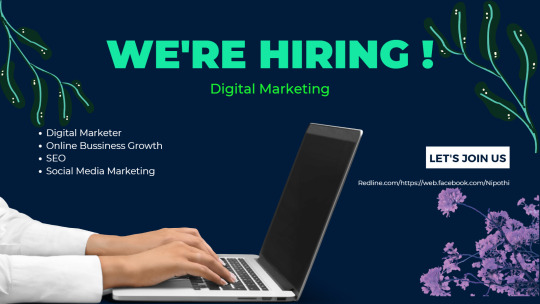
What are the Advantages of Digital Marketing?
Digital marketing offers numerous advantages for businesses and individuals looking to promote products, services, or brands. Some of the key advantages include:
Global Reach: With the internet's global reach, digital marketing allows businesses to reach a vast and diverse audience worldwide, breaking down geographical barriers.
Cost-Effective: Digital marketing often requires lower investment compared to traditional marketing methods like TV or print ads. It's particularly beneficial for small businesses with limited budgets.
Targeted Audience: Digital marketing enables precise audience targeting based on demographics, interests, behaviors, and other criteria. This ensures that your marketing efforts are reaching the right people who are more likely to convert.
Measurable Results: Digital marketing provides detailed analytics and data tracking, allowing you to measure the effectiveness of your campaigns in real time. You can track metrics like website traffic, conversion rates, click-through rates, and more.
Flexibility and Adaptability: Digital marketing campaigns can be easily adjusted and optimized based on performance data. This flexibility allows you to make real-time changes to improve outcomes.
Personalization: Tailoring marketing messages to specific audience segments enhances customer engagement and improves the overall user experience.
Variety of Channels: Digital marketing encompasses a wide range of channels and platforms, including social media, search engines, email, content marketing, and more. This diversity allows you to choose the most relevant channels for your target audience.
Higher Engagement: Interactive content such as videos, polls, quizzes, and live streams can lead to higher levels of engagement and interaction with your audience.
Brand Development: Consistent digital presence through social media and content marketing helps build and reinforce brand identity, making your brand more recognizable and memorable.
Quick Implementation: Digital marketing campaigns can be launched quickly, allowing businesses to respond rapidly to market changes and trends.
24/7 Availability: Digital marketing efforts, such as websites and social media profiles, are accessible to users around the clock, providing continuous opportunities for engagement.
Direct Communication: Digital marketing enables direct and instant communication with your audience through social media comments, emails, and other messaging platforms.
Improved Conversion Rates: Targeted campaigns and personalized content can lead to higher conversion rates compared to generic marketing approaches.
Competing with Larger Businesses: Digital marketing allows small businesses to compete with larger corporations on a more level playing field, as effective strategies and engaging content can attract a significant audience.
Environmental Impact: Digital marketing reduces the need for paper-based materials and physical advertisements, contributing to a more environmentally friendly approach.
These advantages highlight the effectiveness and relevance of digital marketing in today's interconnected and technology-driven world. Businesses that effectively leverage digital marketing strategies can experience increased brand visibility, customer engagement, and overall business growth.
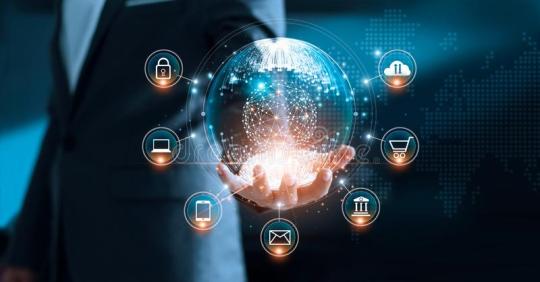
Conclusion Of Digital Marketing.
digital marketing is a dynamic and transformative approach to promoting products, services, and brands in the digital age. It harnesses the power of the internet, electronic devices, and various online platforms to reach and engage with a targeted audience. This mode of marketing offers numerous advantages that have reshaped the way businesses and individuals connect with their customers.
Digital marketing's global reach, cost-effectiveness, precise targeting, and measurable results make it a compelling option for businesses of all sizes. The ability to adapt campaigns in real-time, personalize content, and utilize a variety of channels further enhance its effectiveness.
With the rise of social media, search engines, content marketing, and other digital platforms, businesses can directly communicate with their customers, build brand identity, and drive conversions like never before. The rapid evolution of technology continues to bring new tools and strategies to the field of digital marketing, providing endless opportunities for creativity and innovation.
In today's interconnected world, where consumers are heavily reliant on digital devices and online interactions, mastering the art of digital marketing is crucial for staying competitive and relevant. Embracing its benefits can lead to increased brand visibility, customer engagement, and ultimately, business success.
2 notes
·
View notes